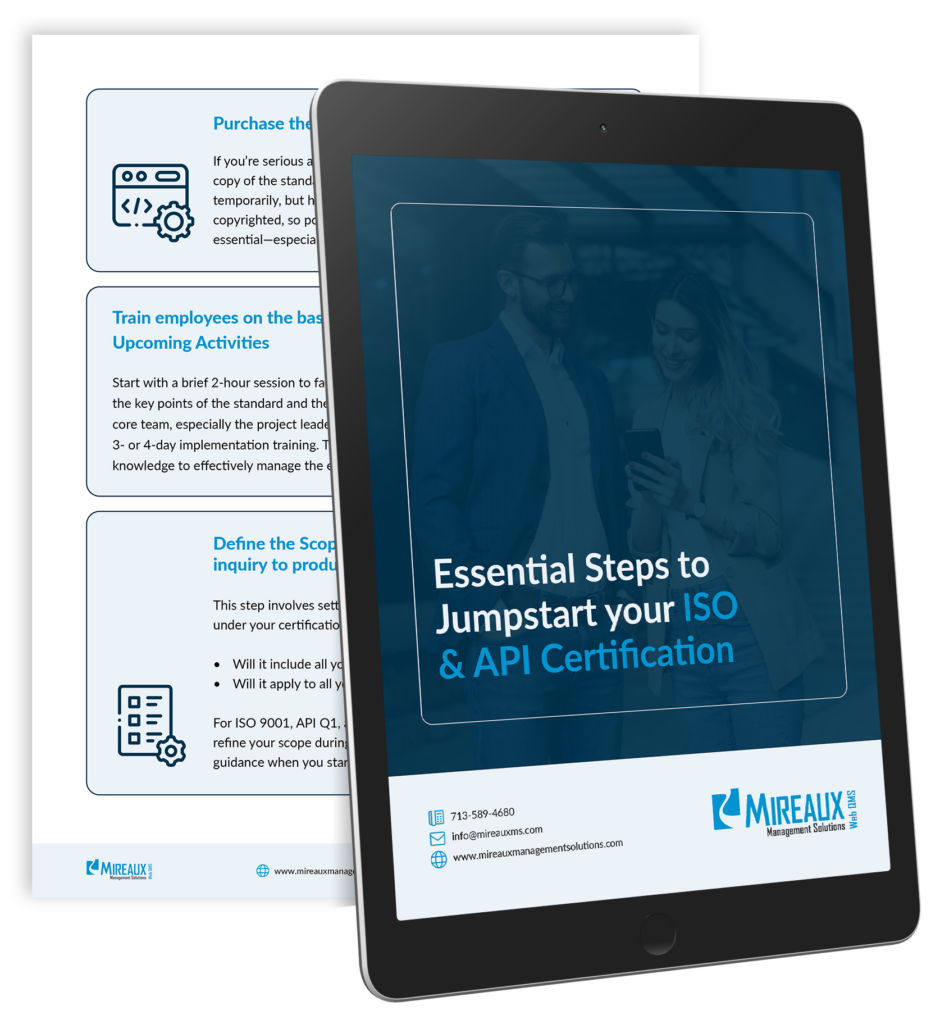We get these questions a lot. Here are our best answers...
Do you have experience in our industry?
Over the years, Mireaux has amassed a great deal of expertise and knowledge, and has expanded to new standards, sectors and industries. While there is always something new, we have a pool of seasoned professionals with decades of experience, and we can certainly find one that has direct or close familiarity in your industry.
Can we get certified fast?
Yes, relatively speaking. Since we use project management principles to drive our projects, we are able to shorten timelines by adding more resources: Consultants, Technical Writers and Auditors. For a fee, we also offer a Rush Project option that can bump your project ahead and secure the resources needed to make things happen fast.
Will our employees follow the procedures if you help us get certified?
Absolutely! In fact, our Proven Consulting Approach is designed and carried out to create a real sense of ownership within your organization. Your employees will feel empowered not just to follow the system, but to challenge it and improve it!
Who will take care of the management system once you leave?
Our Proven Consulting Approach ensures the management system put in place is suitable and sustainable by your organization. At the end of the project, we conduct a formal “Handover” to ensure your team is ready to carry out all tasks required.
However, if you would like for us to remain involved, we can do so through our Managed Services (hourly consulting).
Why is your price for Consulting or Auditing higher than other firms?
While that may be true in some cases, it could be because we provide higher value across all our services. In our Turnkey Consulting projects, we provide step-by-step consultation by a dedicated team who is with you until you have your certificate in your hands. And in our Auditing Services, we count with a robust infrastructure to guarantee value-added audits with a three-day turnaround on Audit Reports.
Do you offer in-person classes?
Yes, we do offer some in-person classes, either open to the Public as part of our Training Class Schedule; or as a private training for your specific company.
Why do other training providers offer the same class for shorter time or less cost?
We have put a lot of hours in designing and developing our courses, in addition to listening to feedback provided by past participants. The lentgh of our classes are the right amount to ensure there is sufficient time for lectures, hands-on workshops and test. Making the class shorter, would require cutting corners on your learning time.
Also, aside from the Instructor, most of our classes are staffed with a Facilitator to ensure questions are answered and that the class runs smoothly.
Why is your software initial deployment cost high?
Our initial deployment encompasses full assistance with migration of your existing data as well as training.
Other software companies may sell you their software without worrying whether you use it or not. At Mireaux, we actually hand hold you through the configuration and migration process, ensuring your data is added properly to every app.
Our goal is to help you streamline your record keeping tasks and see you go through your next Audit using our software.
Does your software applications have mobile apps?
In the past two years, our software development team has pent over 16K hours upgrading our software applications to a newer technology, with the goal of bringing more value to our customers. As of November 2024, we are 93% complete and we plan on being 100% by the end of 2024.
While all our apps are mobile-responsive and work well on any smart phone or tablet, our first app in the Apple and Android store are scheduled to be release in January 2025.
Your price per user is higher than other competitors.
Our user fees are in line with most software of its kind, and while some competitors may be lower, our all-in-one software, includes all our apps to meet Quality, Safety, Environmental and Information Security requirements.

